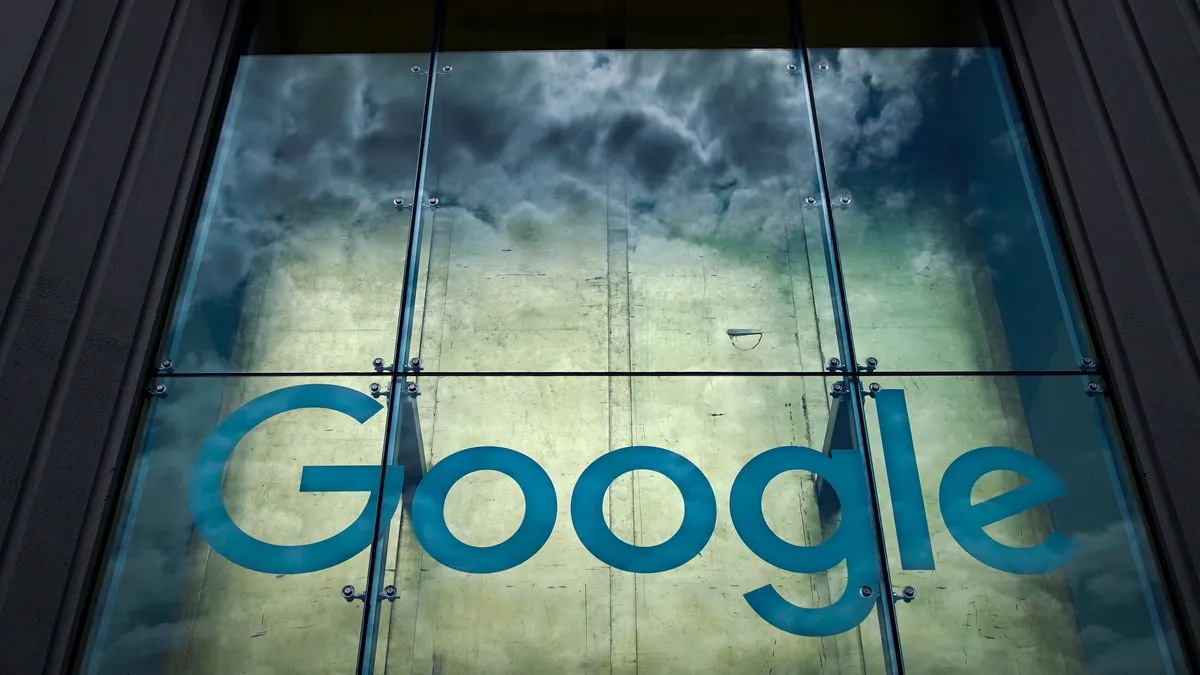Google accused Microsoft of anticompetitive practices in an 11-page response to the Federal Trade Commission’s call for public comment on the cloud computing business Thursday. The FTC opened an inquiry into cloud market competition in March.
“Microsoft’s complex web of licensing restrictions prevents customers, particularly its existing on-premises enterprise clients, from choosing any other cloud provider at the time of migration into the cloud and ultimately locks those customers into its Azure ecosystem,” Google said.
The two largest cloud providers by market share, AWS and Microsoft, also submitted responses to the FTC. AWS stressed that “competition among cloud and other IT providers is thriving,” and Microsoft characterized the cloud market as “highly dynamic and competitive.”
Google alleged Microsoft uses its dominant position in enterprise software to block customers from multicloud deployments, citing changes in Microsoft licensing agreements that can restrict migrations to other cloud providers.
“Enterprise and public sector customers with expansive portfolios of previously purchased, on-premises Microsoft software are faced with increasing restrictions, prohibitions, and surcharges when they attempt to migrate those on-premises workloads to an Azure competitor,” the response said.
Google’s complaint hinges primarily on whether the tech giant used its dominance in enterprise productivity and SaaS solutions, including the Office 365 suite, fairly or not to incentivize customer adoption of Azure.
Microsoft owned nearly 80% of the global market for email and authoring tools last year, compared to Google’s 20%, according to Gartner data. In SaaS, Microsoft’s slice of the $154.6 billion global revenue was a more modest 15%, but Google was not among the top-five vendors.
Microsoft responds
In an email sent to CIO Dive, Microsoft said it has revamped its policies to remove restrictions surrounding cloud.
“We have made changes to our cloud licensing terms to address licensing concerns and provide more opportunity for cloud providers,” a company spokesperson said.
In March, Microsoft announced enhancements to a CSP partnership program initiated last year to make it easier for customers to run workloads with certain infrastructure outsourcers. In May of last year, the company also adopted new policies to appease regulators in Europe, where additional concerns have been raised over cloud market competitiveness.
Cloud Infrastructure Service Providers in Europe, a consortium that includes AWS, filed a competition complaint against Microsoft with the European Commission’s Directorate-General for Competition in November. Negotiations between Microsoft and CISPE commenced in April but have yet to yield a settlement.
Microsoft’s business practices have also been subject to scrutiny by Ofcom. The UK telecom regulatory agency issued a March report with mixed findings.
“Microsoft is widely seen as a logical choice due to integration with existing software, but there are concerns, including ‘de facto’ lock-in,” Ofcom found. However, the report noted that Azure was a logical choice for many companies due to “ease of use.”
Multicloud theory and SaaS
Google Cloud's market strategy hinges on multicloud, an approach that may favor the smaller of the three largest hyperscalers. “We encourage a multicloud, hybrid architecture designed to quickly adapt as a customer’s organization evolves, regardless of the cloud platform,” the company said in the FTC filing.
Google’s 10% share of the global cloud market is dwarfed by Microsoft’s 23% and AWS’s 32%, according to Synergy Research Group data. As the market grows, so do Google’s cloud revenues. In March, Google parent company Alphabet posted the first profitable quarter for GCP since its 2008 inception.
Growing market share, however, is difficult as spending on cloud continues to increase and more organizations migrate away from on-prem data centers.
Google and Microsoft have chipped away at AWS' lead, which took in over half of global cloud spending five years ago. But, as the market matures, positioning may become fixed as enterprises shift from migrating new workloads to optimizing existing deployments.
While the trend has slowed cloud revenue growth for AWS, Microsoft and Google, global spending on cloud is expected to reach nearly $600 billion by the end of the year, up almost 22% year over year. Spending on SaaS, where Microsoft’s position is strongest, will account for roughly one-third of that category, according to analyst firm Gartner.
Microsoft has a longstanding advantage in software, Sid Nag, VP analyst at Gartner, told CIO Dive.
“Even before cloud, Microsoft owned the operating system, and they owned the application business before Office 365 came along by selling Word and Excel on floppy disks,” said Nag. “They’ve used their advantage to move into SaaS and attach that to their Azure business.”
The FTC filing pointed to Microsoft’s 85% market share in productivity software among U.S. federal agencies, citing a 2021 report by research and consulting firm Omdia.
The federal government is notoriously cautious with new technology deployments and exemplifies the vendor loyalty challenges Google faces as it competes with Microsoft. Yet, it was AWS that led the charge challenging the Pentagon’s 2019 decision to award a $10 billion cloud contract to Microsoft.
After a three-year delay, the U.S. Department of Defense reconsidered and opted for a multicloud strategy, approving AWS, Google, Oracle and Microsoft to compete for $9 billion Joint Warfighting Cloud Capability contracts in December.
Disclosure: CIO Dive, which originally published this story, and Omdia are both owned by Informa. Omdia has no influence over CIO Dive's coverage.























